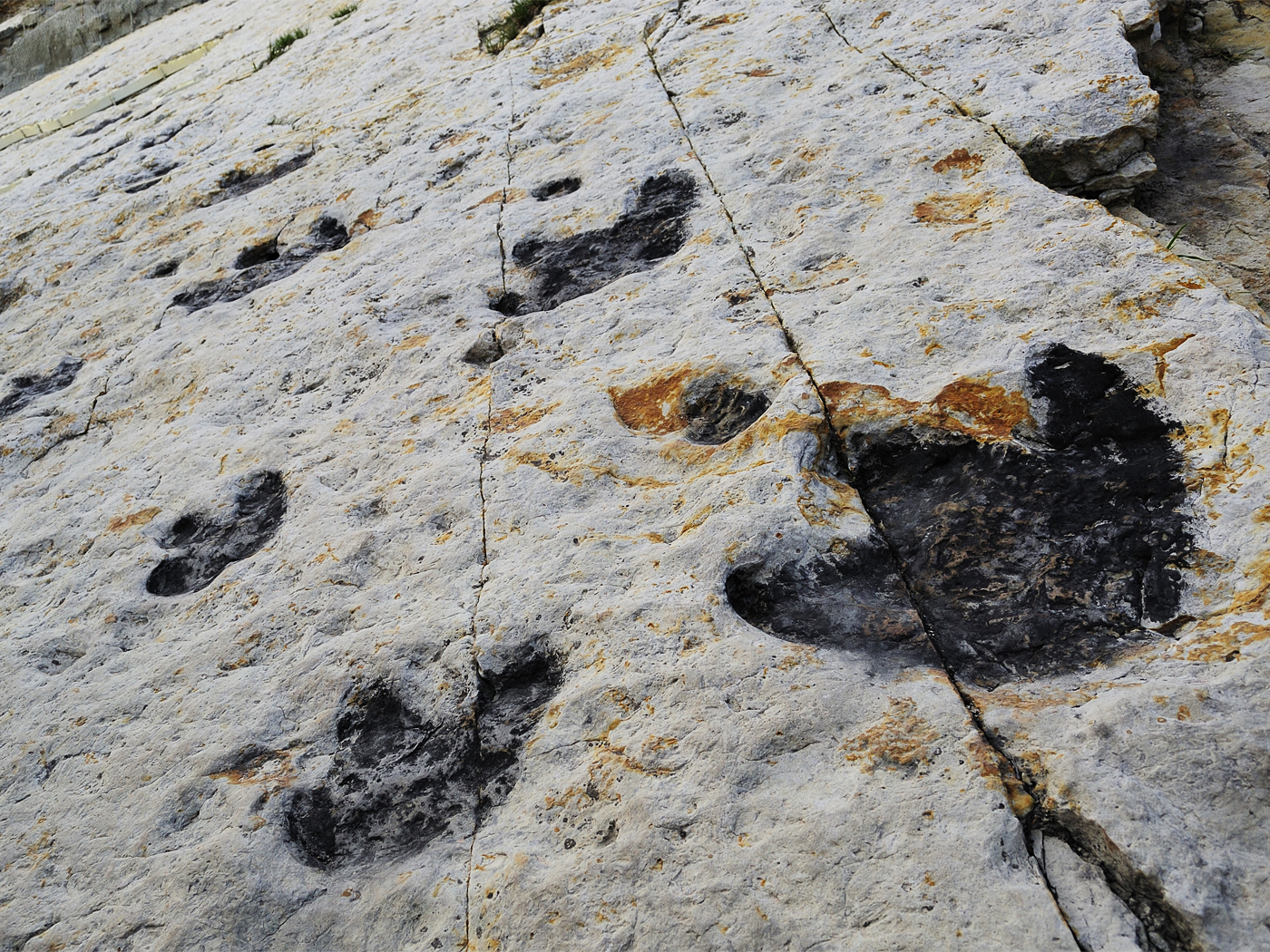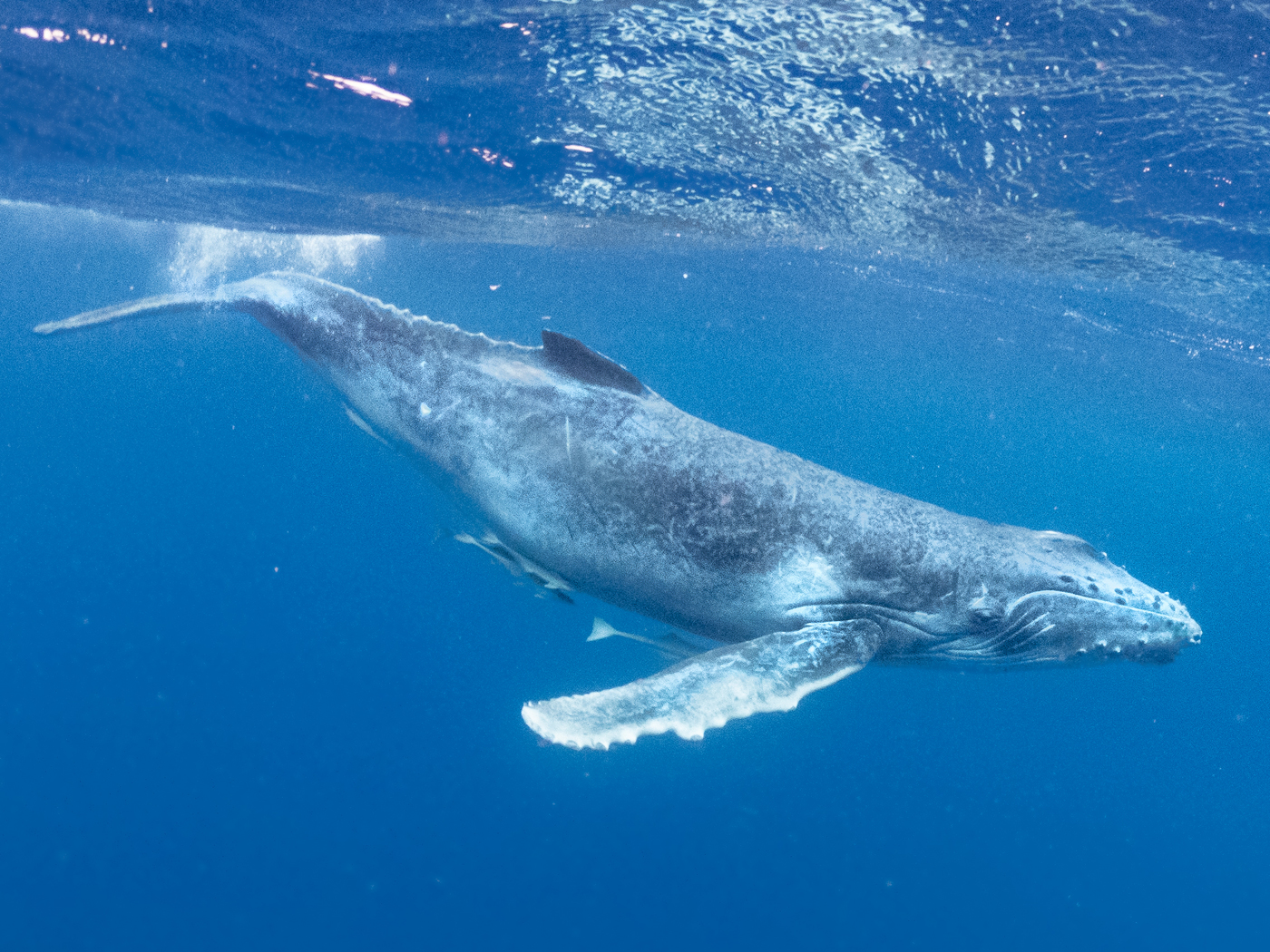One of the most famous living fossils is back in the news. The coelacanth is an endangered deep-sea fish. Its fins fit to unique, wrist-like bones, and unique bony plates envelop what scientists call its lung, which is like the swim bladder that controls buoyancy in other fishes. A new coelacanth fossil find measures more than double the size of live specimens while calling attention to outdated ideas about fossils.
This fossil’s story of discovery began when a private fossil collector asked University of Portsmouth paleontologist David Martill to identify what he hoped was a pterosaur. The mystery fossil came entombed with pterosaur wing bones from Morocco’s famous Cretaceous phosphate beds. According to University of Portsmouth news, Martill identified this strange fossil as the “bony lung” of a fish, a revelation that disappointed the collector but intrigued the scientist for its great size.1
Martill brought in coelacanth expert Paolo Brito of Rio de Janeiro. Today’s coelacanths grow up to just over six feet long. Based on the team’s calculations from the huge fossil lung bones, ancient versions of the fish grew over 16 feet long. The results are published in Cretaceous Research.2
Nineteenth century fossil experts only knew about coelacanths from their fossils. Evolution’s supporters back then taught that its wrist-like bones were evolving into legs. It became famed as a transitional form—an example of evolution recorded in the fossils. Experts envisioned coelacanths clumsily creeping upon ancient beaches to gasp for air on their way to becoming land animals and eventually humans. However, its discovery in 1938 at a Madagascar fish market washed away the whole saga.
It turns out the coelacanth uses its unique limb bones to expertly swivel its fins in tight control of its body position. Since modern coelacanths use their fin-tied bones perfectly well at 500 feet below the sea’s surface—nowhere near land—advocates could no longer use the creature to support evolution.
The coelacanth got demoted from icon of evolution to living fossil. Rather than having evolved into land animals, this fish avoided extinction.
The university news wrote, “Coelacanth fishes first appeared (evolved) 400 million years ago – 200 million years before the first dinosaurs.”1 This first appearance merely refers to the lowest occurrence among Earth’s sedimentary rock layers. Its highest, or last appearance, occurs in Cretaceous layers among dinosaurs.3 Many more layers and fossils lie above those in certain regions.4 But since it still lives today, where are its fossils in layers above the Cretaceous?
According to ICR’s Flood model of earth history, which uses rock data from across the globe and the biblical account to reconstruct the past, lower layers deposited mostly marine creatures early in the Flood year. The Cretaceous layers, which contain the last coelacanth fossils, were about the high-water mark of the Flood, reached on Day 150. Layers above the Cretaceous buried mostly higher elevation land plants and creatures as the Flood waters that had prevailed over the earth receded off the continents.5 No wonder deep sea creatures are hard to find among the Earth’s uppermost fossil layers.
The university news wrote, “It was found next to a pterodactyl which proves it lived in the Cretaceous era – 66 million years ago.”1 But prior to 1938, one could have asserted that coelacanth fossils prove pterodactyls lived only in a Cretaceous or earlier era. Instead, the then-unthinkable discovery of the fish still alive disproved that coelacanths belonged to any particular era.
Coelacanth evolution turned out to be a sham. Could the same be said of geologic eras?
In a case of journalistic irony, the same news that cites a particular fossil as proof of an era also highlights the very animal that broke the mold of fossils representing eras.
Big sea creatures like this giant coelacanth got buried with flying and tropical creatures, mixing land and marine.3 They were buried fast enough to avoid scavengers and deep enough to be preserved as fossils. Then land sediments trapped their jumbled remains as the water receded. These facts demand an abnormally devastating deluge. Instead of explaining these creatures’ layers with eras, explaining them with super-surges of water during the Flood accounts in principle for both the existence of fossils and the order in which we find them.
References
1. Enormous Ancient Fish Discovered by Accident. University of Portsmouth News. Posted on port.ac.uk February 15, 2021, accessed February 17, 2021.
2. Brito, P.M. et al. 2021. A marine Late Cretaceous (Maastrichtian) coelacanth from North Africa. Cretaceous Research. 122: 104768.
3. Clarey, T. 2015. Dinosaurs in Marine Sediments: A Worldwide Phenomenon. Acts & Facts. 44 (6): 16.
4. See Clarey, T. 2020. Carved in Stone. Dallas, TX: Institute for Creation Research, 312-349.
5. Tomkins, J.P., and T. Clarey. 2020. Paleontology Confirms a Late Cenozoic N-Q Flood Boundary. Acts & Facts. 49 (11): 10-13.
*Dr. Brian Thomas is Research Associate at the Institute for Creation Research and earned his Ph.D. in paleobiochemistry from the University of Liverpool.
Big Fish Fossil Recalls Big Flop
The Latest
Dino Footprints Down Under
Dinosaur trackways1 are once again making the news. Australia is the setting of a remarkable series of dinosaur tracks attributed to ornithischian...
April 2025 ICR Wallpaper
"But the Helper, the Holy Spirit, whom the Father will send in My name, He will teach you all things, and bring to your remembrance all things...
Human Evolution and the Inner Ear
The vain attempt by evolutionists to make an evolutionary connection between people and ape-like ancestors continues. This time, it is in regard to...
CREATION PODCAST
Defending the Faith with a Rocket Scientist | Creation.Live Podcast:...
How do engineering principles, biological complexity, and a solid understanding of apologetics work together to further the cause of Christ? Why...
Aerobic and Anaerobic Hot Spring Bacteria
God designed a domain of prokaryotes called Archaea that thrive in harsh and extreme environments. In 1969, two microbiologists, Thomas Brock and Hudson...
CREATION PODCAST
The Soulless Hominid Theory: A Fatal Flaw in Old Earth Creationism...
Welcome to the second episode in a series called “The Failures of Old Earth Creationism.” Many Christians attempt to fit...
Humpback Whale Calls Echo Creation
There is nothing simple about the system of communication called language, whether animal or human.1 Human language is a very sophisticated...
Mary Parker, Creation Ministry Partner of Dr. Gary Parker, Is...
Mary Parker, the wife and co-laborer of Dr. Gary Parker, went home to be with her Lord on March 20, 2025.
Dr. Parker was a popular and effective...
Plants Rely on Quantum Mechanics
Scientists will probably never fully understand photosynthesis as additional research uncovers even more fascinating mysteries.1,2 ICR’s...
Martian Polar Ice Cap ''Surprisingly Young''?
A team of German planetary scientists has concluded that a three-kilometer-thick northern polar ice cap on Mars has a “surprisingly young”...














